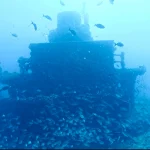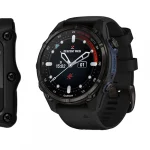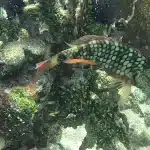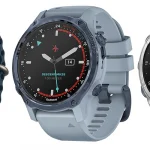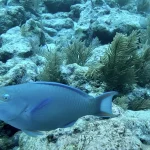Table of Contents
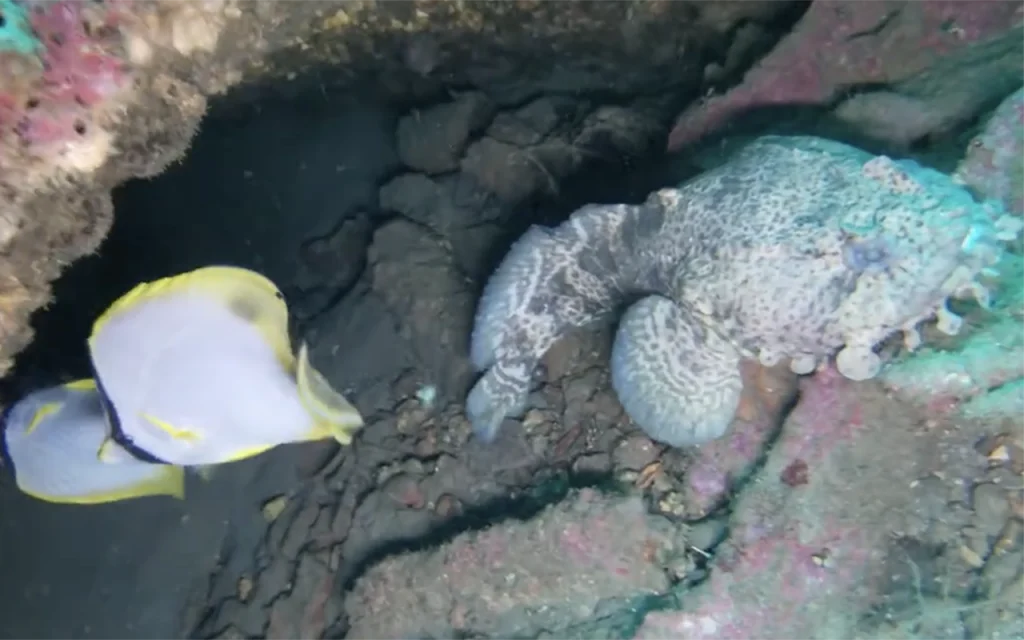
The San Pablo wreck is celebrated among divers for its rich history, diverse marine ecosystem, and the vibrant underwater scenery it offers, making it a popular destination for both recreational and experienced divers.
Article at a Glance
- Historical Significance: The San Pablo, originally a refrigerated cargo ship, sank in 1942 after being attacked by a German U-boat and was later destroyed in a military operation in 1944, making it a site of historical intrigue.
- Diverse Marine Life: The wreck has become an artificial reef, attracting a variety of marine species, including red snapper, amberjack, Goliath grouper, and various invertebrates, creating a vibrant underwater ecosystem.
- Unique Features: Divers can identify key historical remnants such as the intact stern, large boilers, refrigeration coils, and twisted metal, all of which tell the story of the ship’s past.
- Safety Measures: Dive operators implement safety protocols, including guided tours, pre-dive briefings, equipment checks, and emergency preparedness, ensuring a secure diving experience.
- Accessibility: The San Pablo wreck is located approximately 9 miles off the coast of Pensacola, making it easily accessible for divers with good visibility conditions.
- Dive Shops: Several local dive shops offer trips to the San Pablo, including Florida Dive Pros, Niuhi Dive Charters, Emerald Ocean Divers, H2O Below Dive Charters, and MBT Divers, providing guided experiences and equipment rental.
- Dynamic Diving Experience: Each dive at the San Pablo offers a unique experience due to changing marine life and underwater conditions, making it a favorite destination for both novice and experienced divers.
San Pablo Wreck Location Coordinates and Depth
Depth
Approximately 80 feet
Location Coordinates
Latitude 30.11.333′ N, Longitude 87.13.057′ W
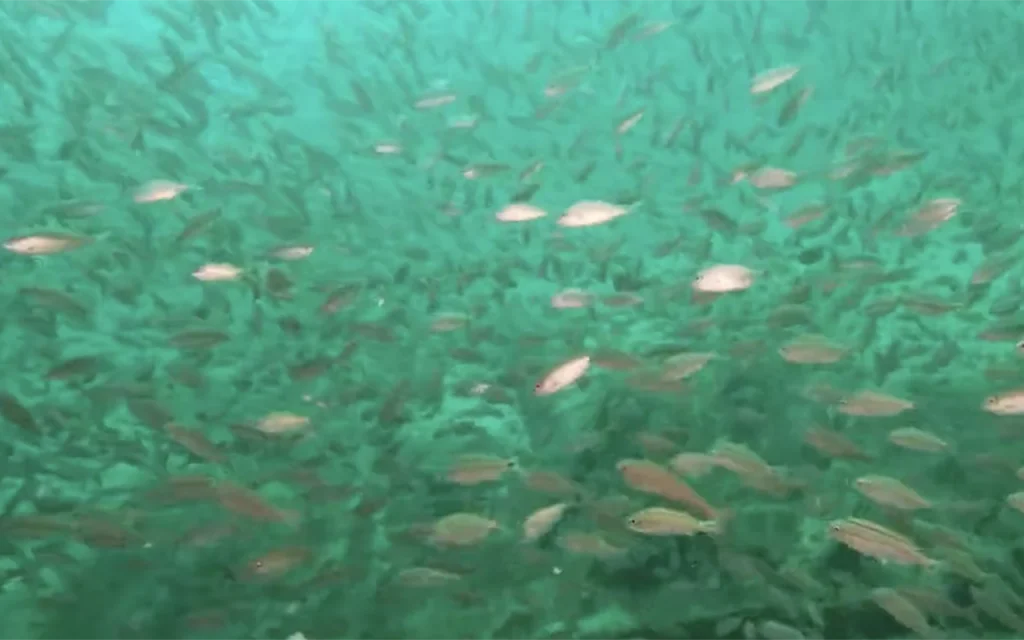
What to Scuba Divers Say About This Wreck
Dive Experience
- Depth and Visibility: The wreck lies at a depth of approximately 60-80 feet, with visibility often reaching up to 13 meters, making it an excellent site for underwater exploration.
- Marine Life: Divers frequently report encountering a diverse range of marine species. The wreck acts as an artificial reef, attracting larger fish such as red snapper, amberjack, and Goliath grouper. Sandbar sharks are also occasionally spotted, adding to the excitement of the dive.
- Colorful Environment: The wreck is adorned with colorful sponges, corals, and hydroids, creating a lively underwater scene. Divers note that the vibrant colors and the variety of life make each dive visually stunning.
Historical Significance
- Intriguing History: The San Pablo has a captivating backstory, having been destroyed in a top-secret military operation during World War II. Originally a cargo ship, it was sunk in 1944 as part of an experiment with remote-controlled explosive-laden boats. This history adds an element of intrigue for divers interested in maritime history.
- Wreck Condition: While the wreck is not intact, remnants such as refrigeration coils and twisted metal are still visible, offering divers a glimpse into the ship’s past. The damage caused by the explosion is evident, but it has created unique diving opportunities as divers navigate through the wreckage.
Overall Appeal
- Diverse Diving Opportunities: Divers appreciate that each dive at the San Pablooffers a different experience due to the dynamic marine life and changing underwater conditions. The site is often described as a “must-see” for anyone interested in wreck diving and underwater photography.
What Kind of Marine Life Can Be Found on The Wreck
Common Marine Life
- Fish Species: The wreck attracts various larger fish, including:
- Red Snapper
- Amberjack
- Goliath Grouper
- Sandbar Sharks
- Baitfish: Schools of baitfish often swirl around the wreck, creating dynamic underwater scenes.
- Bottom-Dwelling Species: Divers may spot Gulf toadfish, which are known for their large mouths and unique appearance, hiding in the sandy areas around the wreck.
Invertebrates and Coral
- Colorful Sponges and Corals: The wreck is adorned with vibrant red and yellow sponges, corals, and hydroids, which cover much of the structure, contributing to the site’s colorful underwater landscape.
- Macro Life: Smaller creatures such as arrow crabs can be found among the crumpled metal fragments, showcasing the wreck’s role as a habitat for various marine invertebrates.
Habitat and Ecosystem
The San Pablo wreck serves as a crucial habitat for marine life, providing shelter and food sources. Its structure, despite being largely damaged from the explosion during its sinking, offers numerous nooks and crannies for marine creatures to thrive. The combination of the wreck’s remnants and the surrounding sandy bottom creates a rich ecosystem that divers find fascinating.
Key Information
| Key Information | Details |
|---|---|
| Location | Off the coast of Pensacola, Florida |
| Depth | Approximately 80 feet |
| Coordinates | 30° 11.333′ N, 87° 13.057′ W |
| Historical Significance | Originally a refrigerated cargo ship, sunk during WWII |
| Sinking Date | August 11, 1944 |
| Current Condition | Wreck is largely intact with recognizable features |
| Marine Life | Home to various species including snapper, grouper, and sharks |
| Diving Experience | Popular site for divers, accessible for various skill levels |
| Dive Shops | Local dive shops offer guided trips to the wreck |
What Makes San Pablo a Unique Diving Experience
1. Rich Historical Background
- The San Pablo was originally a refrigerated cargo ship that sank in 1944 as part of a secret U.S. military operation known as Project Campbell. This operation aimed to disrupt enemy naval activities during World War II. The ship’s intriguing history, including its transformation from a commercial vessel to a military target, adds depth to the diving experience, as divers can reflect on its past while exploring the wreckage3.
2. Diverse Marine Life
- The wreck has become an artificial reef, attracting a wide variety of marine species. Divers frequently encounter larger fish such as red snapper, amberjack, and Goliath grouper, along with schools of baitfish. The presence of sandbar sharks adds to the excitement of the dive. The vibrant underwater ecosystem, with colorful sponges and corals covering the wreck, creates a visually stunning environment.
3. Unique Underwater Features
- Despite the wreck being largely mangled, remnants such as refrigeration coils and twisted metal provide divers with opportunities to explore and observe marine life in various nooks and crannies. The wreck’s condition allows for close encounters with macro critters like arrow crabs and Gulf toadfish, enhancing the overall diving experience.
4. Accessibility and Visibility
- Located approximately 9 miles off the coast of Pensacola, the San Pablo wreck is easily accessible for divers. The site typically offers good visibility, often reaching up to 13 meters (about 43 feet), which is ideal for underwater photography and exploration.
5. Dynamic Diving Conditions
- Each dive at the San Pablo can be different, influenced by the changing marine life and underwater conditions. This variability ensures that divers have a unique experience every time they visit, making it a favorite among both novice and experienced divers.
What is The Full History of This Wreck
Early Years
- Construction and Purpose: The San Pablo was built in 1915 in Belfast, Ireland, as a refrigerated cargo ship. It was primarily used to transport bananas and other tropical fruits between Caribbean ports and the United States, operating under various shipping companies, including Balboa Shipping Co. by 1931.
World War II and Sinking
- Target of German U-Boats: With the onset of World War II, the San Pablo became vulnerable to attacks from German submarines. In May 1942, while near the Yucatán Channel, it was fired upon by a U-boat. The crew managed to evade capture and reached safety in Puerto Limon, Costa Rica.
- Final Attack and Sinking: While docked in Costa Rica, the San Pablo was struck by two torpedoes, which caused it to flood rapidly and sink, resulting in the loss of all 24 crew members aboard. The wreckage left only the superstructure and masts above water.
Recovery and Military Use
- Refloating and Repairs: In March 1943, the San Pablo was raised and towed to Tampa, Florida, for repairs. However, the War Shipping Administration deemed it a total loss. In December 1943, it was relocated to Panama City, where it was slated for a top-secret military operation.
- Project Campbell: The ship was repurposed as part of Project Campbell, a secret operation by the Office of Strategic Services (OSS), the precursor to the CIA. The project aimed to test a remote-controlled explosive-laden speedboat designed to target enemy vessels without risking human lives. The San Pablo was chosen as the target for this experiment.
The Destruction of the San Pablo
- The Test: On August 11, 1944, the San Pablo was destroyed in a controlled explosion. A remote-controlled speedboat, disguised as a civilian fishing vessel, was loaded with over 3,000 pounds of explosives. The operation was successful, with the ship sinking within two minutes of the detonation.
Legacy and Current Status
- Rumors and Nicknames: Following its destruction, local residents referred to the wreck as the “Russian Freighter,” fueled by rumors of espionage and mystery surrounding its military ties. This nickname persists today, despite the ship’s actual history being revealed through declassified documents in later years.
- Diving Destination: Today, the San Pablo lies approximately 80 feet underwater, serving as an artificial reef that attracts diverse marine life. It is a popular dive site, offering divers a glimpse into its storied past through remnants like refrigeration coils and twisted metal.
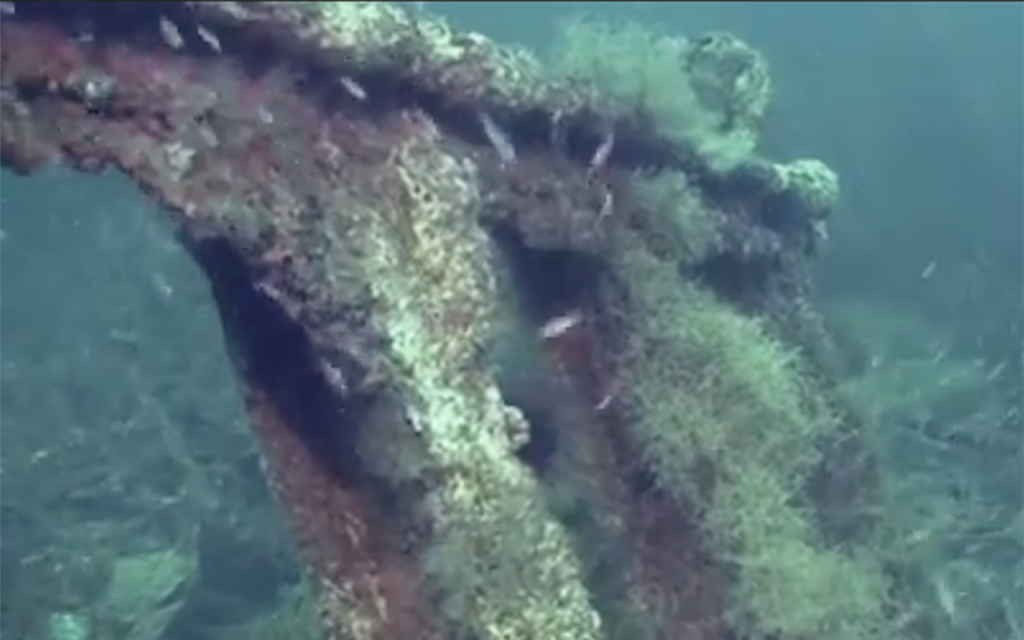
What Historical Features Can Still Be Identified on Wreck
Key Historical Features
- Intact Stern and Boilers:
- Twisted Metal:
- Refrigeration Coils:
- Marine Life Habitat:
- The wreck has become an artificial reef, fostering a diverse marine ecosystem. The structure of the wreck provides shelter and breeding grounds for various marine species, making it a vibrant site for underwater exploration. This transformation highlights the dual nature of the wreck as both a historical artifact and a thriving marine habitat.
- Historical Context:
- The San Pablo was originally built in 1915 and served as a refrigerated cargo ship until it was sunk by German U-boats in 1942. After being raised and declared a total loss, it was used in a top-secret military operation known as Project Campbell, where it was destroyed in 1944 to test a remote-controlled explosive-laden speedboat. This backstory adds layers of historical significance to the wreck, making it a focal point for both diving enthusiasts and historians.
What Safety Measures Are in Place for Divers Visiting San Pablo
1. Guided Dive Tours
- Professional Guides: Divers are encouraged to join guided tours led by experienced dive instructors or dive masters familiar with the wreck. These professionals provide valuable insights about the site and ensure that divers adhere to safety protocols.
2. Pre-Dive Briefings
- Safety Briefings: Before entering the water, divers typically participate in a safety briefing that covers the dive plan, potential hazards, and emergency procedures. This helps prepare divers for the conditions they may encounter.
3. Equipment Checks
- Thorough Inspections: Divers are advised to conduct thorough checks of their diving equipment, including tanks, regulators, and buoyancy control devices, before the dive. Ensuring all gear is functioning properly is crucial for safety.
4. Depth Awareness
- Monitoring Depth: The San Pablo wreck lies at a depth of 60-80 feet (18-24 meters). Divers are reminded to monitor their depth closely and to adhere to no-decompression limits to avoid potential risks associated with deep diving.
5. Buddy System
- Diving with a Partner: Divers are encouraged to always dive with a buddy. The buddy system enhances safety, allowing divers to assist each other in case of emergencies or equipment failures.
6. Emergency Preparedness
- Emergency Equipment: Dive operators typically carry emergency equipment, such as oxygen kits and first aid supplies, on board. Divers are briefed on the location of this equipment and emergency procedures in case of an incident.
7. Environmental Awareness
- Marine Life Precautions: Divers are educated about the local marine life and advised to avoid touching or disturbing the ecosystem. This helps protect both divers and the marine environment surrounding the wreck.
8. Weather and Current Conditions
- Monitoring Conditions: Dive operators keep a close watch on weather and current conditions to ensure it is safe to dive. They may cancel or postpone dives if conditions are deemed unsafe.
Dive Shops That Prove Diving Trips to This Shipwreck
- Florida Dive Pros
- Rating: 4.9
- Address: 7203 US-98, Pensacola, FL 32506
- Services: Offers dive charters, equipment rental, and SCUBA training. They can recommend local dive charters for exploring the wrecks and reefs of Pensacola.
- Website: Florida Dive Pros .
- Niuhi Dive Charters
- Rating: 4.9
- Address: 10139 Sinton Dr, Pensacola, FL 32507
- Services: Provides tailored dive charters for various diving styles, including wreck diving. They operate daily trips and cater to divers of all skill levels.
- Website: Niuhi Dive Charters .
- Emerald Ocean Divers
- Rating: 5.0
- Services: Specializes in dive charters and offers trips to various wrecks, including the San Pablo.
- Website: Emerald Ocean Divers .
- H2O Below Dive Charters
- Rating: 4.7
- Address: 10121 Sinton Dr, Pensacola, FL 32507
- Services: Offers recreational and technical dive charters to various wrecks, including the San Pablo. They focus on safety and provide a comfortable diving experience.
- Website: H2O Below Dive Charters .
- MBT Divers
- Rating: 4.7
- Address: 3920 Barrancas Ave, Pensacola, FL 32507
- Services: Provides dive charters to multiple dive sites, including wrecks in the area.
- Website: MBT Divers .
North Florida Wrecks
- USS Oriskany
- USS Massachusetts
- SS Tarpon
- SS Gulf America
- Empire Mica
- USS Chippewa
- Avocet
- Black Bart
- The Vamar
- San Pablo
- USS Narcissus
- The Loftus Wreck
- The Dorothy Louise
- The Mizpah
- MV Janet
- The Eidsvag
- YDT-14 and YDT-15
- USS Strength
- Miss Louise
- The Lulu
- PC-1174
- Three Coal Barges
- USS Accokeek (ATA-181)
- El Dorado
- The Grey Ghost
- The Pete Tide II
- Red Sea Tug

